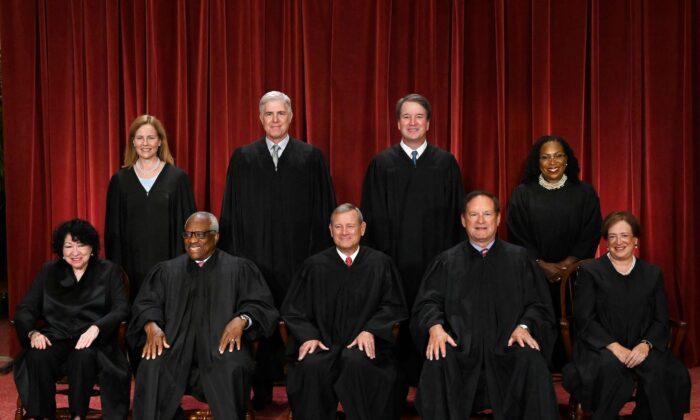An attorney who was involved in the Supreme Court’s recent landmark affirmative action case responded to a claim made by Justice Ketanji Brown Jackson in her dissent that black newborn babies are more likely to die if they aren’t treated by a black physician.
In Ms. Jackson’s dissent in the court’s ruling on Students for Fair Admissions v. Harvard, in which the majority ruled to end affirmative action in college admissions, Ms. Jackson sought to show that race-based admissions can be a matter of life and death for minority groups.
“For high-risk Black newborns, having a Black physician more than doubles the likelihood that the baby will live and not die,” Ms. Jackson wrote as an example.
However, that claim was strongly criticized by Ted Frank, a senior attorney with the Hamilton Lincoln Law Institute, who said that it’s mathematically impossible.
Mr. Frank asserted that the cited study “makes no such claims” and instead shows a 0.13 percent to 0.2 percent improvement in survival rates for black newborns when cared for by black pediatricians. Thus, there was “no statistically significant improvement for black obstetricians,” he wrote.
The amicus brief filed by the Association of American Medical Colleges “either misunderstood the paper or invented the statistic,” he wrote, adding that the study appears to be flawed, too.
“There, the most highly specified model still shows an improvement in black newborn survival,” Mr. Frank wrote. “But if you know how to read the numbers—the authors don’t say it—it also shows black doctors with a statistically significant higher mortality rate for white newborns, and a higher mortality rate overall, all else being equal.”
“The principal cited finding of the [study] was that the mortality rate for black newborns, as compared to white newborns, decreased by more than half when under the supervision of [a] Black physician,” the letter states. “In absolute terms, this study found that patient-physician racial concordance led to a reduction in health inequity.”
The letter also states that while decreased mortality often indicates a higher rate of survival, “statistically, they are not interchangeable.”
And Jonathan Turley, a law professor at George Washington University and opinion writer for multiple news outlets, wrote in a blog post that the problem Mr. Frank points to is due to the abundance of amicus briefs submitted to the Supreme Court.
Ruling and Outcome
In the majority’s ruling against the universities’ policies, Chief Justice John Roberts wrote that a student should be treated as “an individual” and not as part of a collective group such as a race. Instead of focusing on an individual’s merits, universities have done the opposite, Mr. Roberts added.“[Many universities] have concluded, wrongly, that the touchstone of an individual’s identity is not challenges bested, skills built, or lessons learned but the color of their skin. Our constitutional history does not tolerate that choice,” Mr. Roberts wrote. “Both [universities’] programs lack sufficiently focused and measurable objectives warranting the use of race, unavoidably employ race in a negative manner, involve racial stereotyping, and lack meaningful end points.”
Justices Clarence Thomas, Samuel Alito, Neil Gorsuch, Brett Kavanaugh, and Amy Coney Barrett joined Mr. Roberts in the majority. Justices Sonia Sotomayor and Elena Kagan joined Ms. Jackson in dissenting, with Ms. Sotomayor alleging that the majority’s ruling would “[entrench] racial inequality” for decades to come in the United States.





